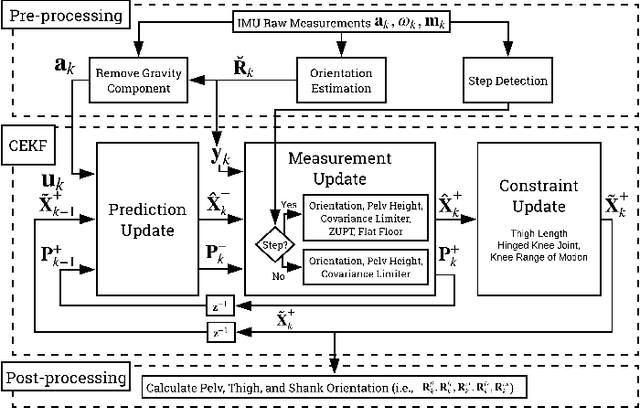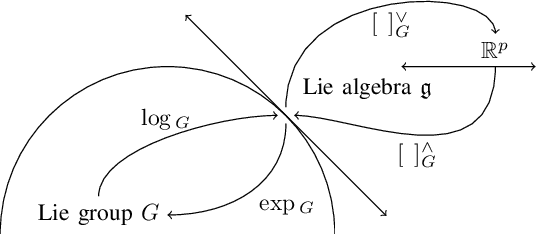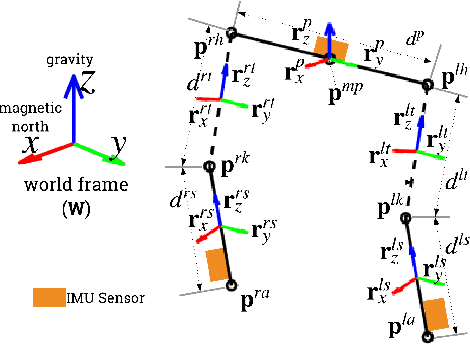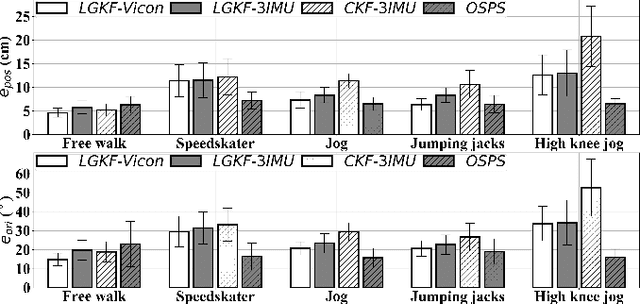Estimating Lower Limb Kinematics using a Lie Group Constrained EKF and a Reduced Wearable IMU Count
Paper and Code
Oct 04, 2019



This paper presents an algorithm that makes novel use of Lie group representation of position and orientation alongside a constrained extended Kalman filter (CEKF) for accurately estimating pelvis, thigh, and shank kinematics during walking using only three wearable inertial sensors. The algorithm iterates through the prediction update (kinematic equation), measurement update (pelvis height, zero velocity update, flat-floor assumption, and covariance limiter), and constraint update (formulation of hinged knee joints and ball-and-socket hip joints). Evaluation of the algorithm on nine healthy subjects who walked freely within a $4 \times 4$ m$^3$ room shows that it can track motion relative to the mid-pelvis origin with mean position and orientation root-mean-square error of $5.75 \pm 1.4$ cm and $19.8 \pm 5.2^\circ$, respectively. The sagittal knee and hip joint angle correlation coefficients were $0.88 \pm 0.1$ and $0.77 \pm 0.1$. This paper demonstrates an application of Lie group representation for inertial motion capture. Furthermore, the algorithm can compute gait parameters in real-time and, hence, can be used to inform gait assistive devices.
 Add to Chrome
Add to Chrome Add to Firefox
Add to Firefox Add to Edge
Add to Edge